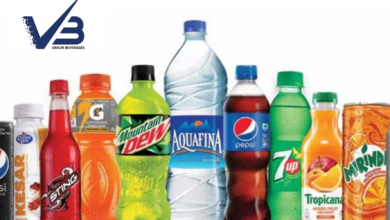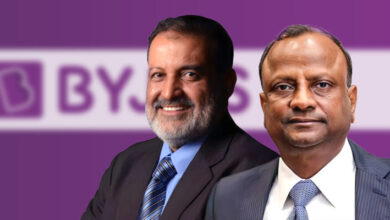Check out our kitchen company’s comprehensive guide on growing your revenues.

Kitchens with a lot of noise are becoming more and more common. A lot of companies were forced to go into lockdown mode as the virus spread throughout the globe. People were more secluded in their homes, and dine-in service began to fall apart. This was catastrophic for the food and beverage business. The food industry has seen thousands of restaurants go out of business, and many new ones have no idea how to grow their revenue. Many individuals were protected from losing millions of dollars because to the notion of cloud kitchens, and this shows that technology is responsible for a paradigm change.
Shared kitchens and ghost kitchens are other names for cloud kitchens, thus they’re not unique. Dining-in is not an option at this restaurant. Every aspect of the cloud system is geared on making delivery-ready meals. Food was an obvious choice that would become a cloud service sooner rather than later in an era when you can order anything with a few clicks on your smartphone.
Deliveries have improved tremendously since 1889, but meal ordering is still available today thanks to various ingenious features. There are no actual outlets where you can pick up the food in cloud kitchens, but it is a location where many restaurants produce their meals by sharing rent. Delivery websites like Swiggy, Zomato, and others fulfil the orders.
These kitchens have become a profitable business for foodies because to the growth of the cloud computing sector. However, because of misguided marketing or shoddy execution, several companies fail to meet their revenue targets. Here’s a step-by-step tutorial on how to generate sales in your cloud kitchen company to help you avoid these pitfalls.

Boost your cloud kitchen sales by using these easy strategies.
Use images to entice potential clients.
The digital age is upon us. In the food and fashion industries, visuals have a greater impact than you would expect For a hungry person, pictures, despite their pixels, are closer to reality than food itself. Studies show that enticing someone with visuals will encourage them to place an order for meals at your restaurant.
When someone sees a mouthwatering video of a cake or pizza, their body produces ghrelin, which makes them hungry and encourages them to go out and purchase something from the store where they saw it. In addition to drawing attention, these images also aid in making an educated decision, and it’s safe to say that visual menus such as these are much more dependable than text-based ones.

In the business world, the term “saving” is replaced with the phrase “investment.”
Websites bridge the distance between your kitchen and your customers. There have to be positive reviews and narrative outlets like websites supporting the final product. For your company to take off, you’ll need a well-designed website that follows best SEO techniques to rank highly in search engine results. Cloud kitchen websites must contain the following features:
A detailed account of the inspiration for starting the firm.
A virtual order tracker, as well as a repository for good feedback and satisfied consumers.
A portion of the blog devoted to educating the reader about cloud kitchens and their history while providing value to the reader.
FSSAI certification, health and trade licence, fire/safety licence, shop and establishment licence are all examples of acceptable proof of certification.
This is a picture-based digital menu.
Good use of visuals.
The use of a smartphone or other mobile device.
A rallying cry.
Websites help to establish trust and generate revenue by converting visitors into paying customers. With a website and social media presence, you may progressively boost your revenues by a significant amount.
Use food delivery companies as a resource
It’s a smart move to enable clients to ship from your website; nevertheless, it’s as important to provide them a variety of shipping options. Millions of cafes and restaurants are linked to food delivery businesses. As a result, your clientele will be more diverse, and you’ll have more access to them.
This will not only boost your cloud kitchen’s sales, but it will also save you money by eliminating the need to hire delivery personnel. Discount periods for these services are common, and orders typically come in by the thousands. Your cloud kitchen will profit from this strategy since it is both time and cost effective.
Make use of internet listings to your advantage
Customers make their purchasing decisions based on information found online. A new venue or a new meal isn’t something anybody wants to try unless they know about the quality and experience they’ll have there. Previous customers publish comments and images about any location they’ve visited, which reflect on the business’s reputation.
As a result, post your company on search engines like Google, Yahoo, or other food review sites, and gradually grow your audience by focusing on your unmatched customer service and the unique cuisine you produce. Aside from increasing the visibility of your organisation, it also assures that clients from different pages arrive at the same conclusion about your product or service.
Using influencers is crucial
Influencers reach a big number of people via a variety of platforms, and their advice is highly sought for. You’ll get so many orders when an influencer posts a video or review praising your cloud kitchen’s exceptional flavour that you may need to hire more employees to keep up with demand.
It involves compensated participation, free gifts, and trade agreements. Analyzing an influencer’s audience, engagement, and post data might help you identify a match. With a food blogger, you can trust that your sales will improve.
Expand your menu’s selection of cuisines.
More meal selections mean more clients with different food tastes will come to your establishment. For example, if all you can get in your area is Indian food, consider expanding your options to include Italian, Continental, and fast food. Finicky eaters will be able to order exactly what they want without of having to waste time scrolling through your whole menu.
In addition, you may provide combination meals, which mix the flavours of many dishes into a satisfying experience for the customer. As a result, meals with lower order quantities may be sold alongside high-volume items, resulting in the ideal mix.
Written in blue thinking bubbles, the word reads: KITCHEN.

What can OkCredit do for you?
To keep track of all the credit and payment transactions with your clients, you can also utilise the OkCredit application, which will expedite your growing cloud kitchen company sales. This will free up time for other tasks by reducing the physical and mental labour involved.
Conclusion
The best way to increase sales in your cloud kitchen company is to provide outstanding customer service. Cleanliness is also important in today’s health-conscious culture, so be open and honest about your ingredients and method.
If you follow the aforementioned techniques and the general necessities of any kitchen and cuisine, you’ll be successful in attracting clients and keeping them happy as well. Food is a basic human need that will never diminish in supply. For your business to become well-known, you must keep up with the latest trends while still abiding by the rules of the road.
edited and proofread by: nikita sharma




